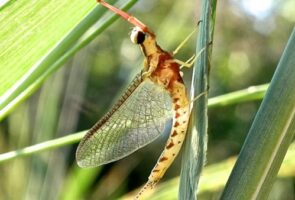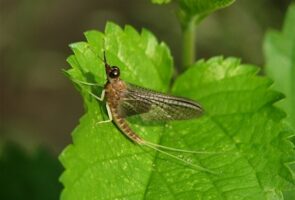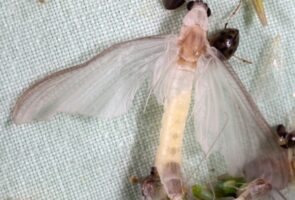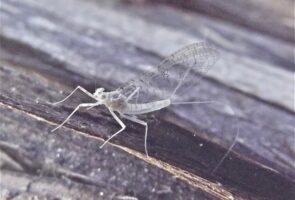Mayflies
Mayflies can be less than 1/8” and as large as 1 inch in length, depending on the species. Females deposit eggs while flying low over the water or dipping their abdomens in water. The nymphs develop in several instars by molting. They feed on organic matter such as plant material or algae. Mature nymphs swim to the surface onto rocks or plant stems, and molt into subadults (subimagos). In this stage the body is usually a dull color and the wings are somewhat cloudy. They will molt once again into an adult (imago). Mayflies are the only group of insects that molt again after they have wings. The adult color can vary from translucent to white, yellow, orange, green, brown or black. The wings are usually transparent with many crossveins.
Mayflies are in the order Ephemeroptera and are named for the ephemeral lives of the adults. Adults have no functional mouthparts and live from a few hours to a week or two, but most adults live only 1 or 2 days. Males gather in swarms and as a female flies into the swarm, mating occurs in flight. The adults and nymphs are an important food source for fish and other aquatic wildlife. Most larvae develop in streams and rivers that are well oxygenated and generally free of pollution, so they are indicators of relatively clean water. There are 21 families and 600 species of Mayflies in North America.
Disclaimer: The content of NatureSearch is provided by dedicated volunteer Naturalists of Fontenelle Forest who strive to provide the most accurate information available. Contributors of the images retain their copyrights. The point of contact for this page is: Loren Padelford.




